Each year, the MND Association dedicates the month of June to raising MND awareness. This year, we focus on the eyes – in most people with MND the only part of their body they can still move and the only way left for them to communicate. Alongside the Association-wide campaign, the Research Development team selected six most-enquired about topics, which we will address through six dedicated blogs.
We all know that rigorous research is the key to finding a cure for MND. Scientists are working hard every day to find the causes of MND, developing new treatments that would help tackle the disease and also looking for new ways to improve the quality of life of people currently living with the disease. But what does it take to have research at heart of everything you do? What is the typical day in the life of a researcher and what does carrying out a research study actually involves?
We asked eight researchers to give us an idea of what their research is all about and what their typical day looks like. Read about four of them in the following blog and keep an eye out for ‘Part 2: PhD edition‘ in the next few days…
Dr Irene Zubiri, postdoctoral researcher at Queen Mary University of London.

“Working as an MND researcher is really exciting and one of the reasons why is because it is quite difficult to describe a typical day. In general terms my work consists of trying to identify and measure differences in the amount of specific proteins that can be found in patients’ blood that might not be in blood of healthy volunteers. This research aims to facilitate future diagnosis, prognosis and treatment of MND.
Carrying out one experiment can take me from 1 hour to 3 weeks of lab work, with the analysis and biological interpretation ranging between 15 minutes to 6 months. I usually start my day by checking my TO DO list, cross-out the easiest tasks quickly, and place orders for various lab materials. Then I face the more complicated tasks – designing figures for a paper, planning my experiments for the next day, week or month, or re-think an experimental strategy that failed for unknown reasons. Other times my day consists of just rushing to the lab to start or continue an experiment. At the end of my day, I always come back to my desk and write the next TO DO list.”
Dr Danielle Leighton, Clinical Research Fellow at the University of Edinburgh.
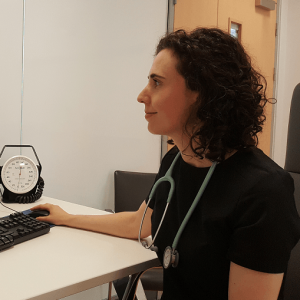 “My project aims to study the genetics of MND and the clinical features that people who carry genetic mutations develop (‘genotype-phenotype correlations’). I work with clinical specialists throughout the country as this is a population-wide study involving anyone living with MND in Scotland. A typical day for me involves visiting patients in their homes to talk about research and invite them to take part. We believe that all patients should be given an opportunity to participate and so this might involve travelling anywhere in Scotland!
“My project aims to study the genetics of MND and the clinical features that people who carry genetic mutations develop (‘genotype-phenotype correlations’). I work with clinical specialists throughout the country as this is a population-wide study involving anyone living with MND in Scotland. A typical day for me involves visiting patients in their homes to talk about research and invite them to take part. We believe that all patients should be given an opportunity to participate and so this might involve travelling anywhere in Scotland!
I sign patients up, and collect clinical information and a DNA sample (blood or saliva). The samples are taken to the laboratory to be genotyped and interpreted. These data are integrated using the Scottish Clinical Audit Research and Evaluation for MND (CARE-MND) platform. This is a unique tool which allows us to collate all this rich information and, ultimately, learn from the people who know most about the disease – the patients.”
Dr Abigail Savage, postdoctoral researcher at the University of Liverpool.
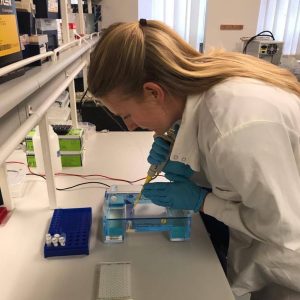 “My job is to research the role that mobile DNA or ‘jumping genes’ have in contributing to the risk of developing MND. Nearly half of our DNA is made up of mobile DNA. In modern humans some of these mobile DNA elements ‘jump’, inserting a new copy of themselves into our DNA, making us genetically different to each other. They also carry on jumping as we age, constantly changing the DNA in our brain cells and potentially affecting how the cells work. These jumps could increase the risk of developing diseases like MND. This research wouldn’t be possible without the people who have donated their brain to research, creating such an invaluable resource.
“My job is to research the role that mobile DNA or ‘jumping genes’ have in contributing to the risk of developing MND. Nearly half of our DNA is made up of mobile DNA. In modern humans some of these mobile DNA elements ‘jump’, inserting a new copy of themselves into our DNA, making us genetically different to each other. They also carry on jumping as we age, constantly changing the DNA in our brain cells and potentially affecting how the cells work. These jumps could increase the risk of developing diseases like MND. This research wouldn’t be possible without the people who have donated their brain to research, creating such an invaluable resource.
Today I have been using specialist computer software to analyse DNA from people with MND and comparing it to DNA from people without the disease, to look for differences in their jumping genes. I used ‘polymerase chain reaction (PCR)’ to amplify the jumping genes that I have identified. This technique makes lots of copies of the pieces of DNA I want to analyse so that it can be easily seen. I then separate the copies of the DNA and visualise them on a gel to see who has the ‘jumping gene’ and who doesn’t.”
Dr Agnes Nishimura, senior researcher at King’s College London.
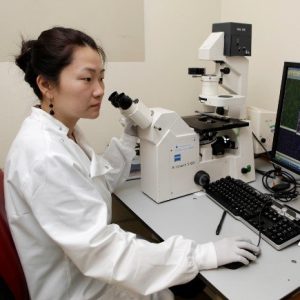 “My current project involves investigating MND using stem cells derived from patients with MND. This project is very demanding and it requires me to spend a lot of my time in the laboratory. A typical day starts with me looking down the microscope to check if the cells are healthy. At the moment, I have several lines from different individuals and I transform these cells into motor neurons. After assessing the cells, I either prepare reagents to make more neurons or change the medium on the existing neurons (I am basically giving food to my cells!).
“My current project involves investigating MND using stem cells derived from patients with MND. This project is very demanding and it requires me to spend a lot of my time in the laboratory. A typical day starts with me looking down the microscope to check if the cells are healthy. At the moment, I have several lines from different individuals and I transform these cells into motor neurons. After assessing the cells, I either prepare reagents to make more neurons or change the medium on the existing neurons (I am basically giving food to my cells!).
These cells will be maintained in culture for approximately 2 months, when they start to make connections with one another, resembling what happens in the brain. After 2-3 months, I do different experiments to check for differences between the MND group and the controls. I usually analyse what the cells look like or I collect the cells for biochemical analyses. To analyse the cells I add different dyes into their dishes and capture images using special microscopes (images below) and analyse the results using imaging software later on.”
Images courtesy of Dr Nishimura, King’s College London
For information about other projects that we fund, see our Information sheet E: Projects we fund.
Keep an eye out for the upcoming second part of this blog article – in the life of a PhD student.

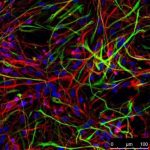
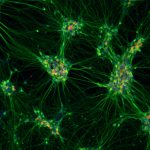
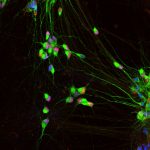
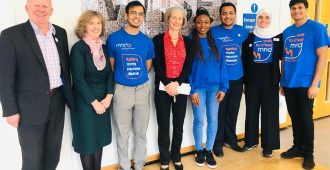

Comments are closed.